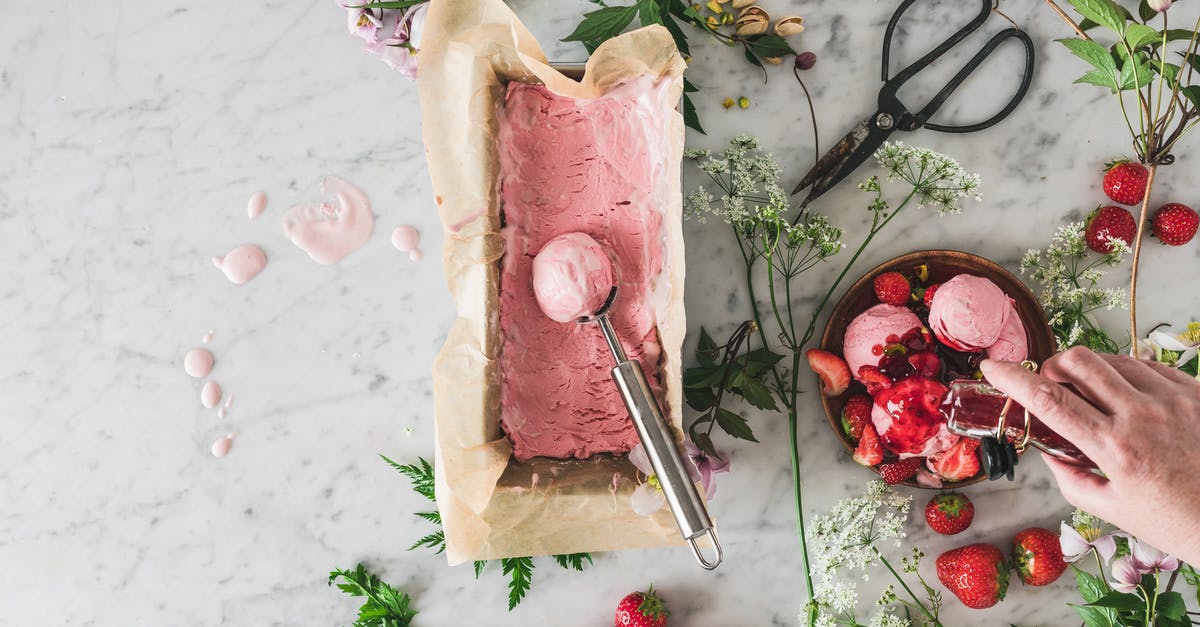My meringue forms syrup beads on top

Every time I make a pie , topped with meringue , little beads of sugary syrup form on the top of the meringue a few hours later. Why?
Best Answer
That's often referred to as weeping. A few things might help. Is your pie filling hot when you spread the meringue? If the filling is cool, the meringue will cook unevenly (the top before the bottom), causing weeping. If your filling is cool, put the pie in the oven for a few minutes before applying the meringue. Another thing that might help is equal amounts of cornstarch and sugar mixed with water (about twice as much water as solids) brought to a rolling boil and allowed to cool to just warm. Drop a couple of teaspoons of the resulting paste into the meringue when you're almost done whipping it. That will help to stabilize the meringue. Also, try not to cook meringue pies on humid days.
Weeping can also be caused by over (or under) cooking. Confused yet?
Oh, and one more thing. Try warming the whites before whipping. That's counter-intuitive for fluffy whites, but it does help it to cook evenly and keep it stable, especially if humidity is part of the problem. Heat gently and go for about the temp of hot tap water.
EDIT: Looking for more precise instructions for the warm meringue I found another similar option that might work better. Here are better instructions for cooked, or "Italian" meringue. http://www.ochef.com/727.htm
From that site:
Italian Meringue From The Way to Cook, by Julia Child
Ingredients:
For the Egg Whites:
2/3 cup egg whites (4 to 5 whites) A pinch of salt 1/4 tsp cream of tartar
For the Sugar Syrup:
1-1/3 cups sugar 1/2 cup water
Instructions:
Beat the egg whites at slow speed until the foam throughout, add the salt and cream of tartar, gradually increase the speed to fast, and beat to soft peaks. Turn the machine to slow as you complete the sugar syrup.
Bring the sugar and water to the simmer, swirl the pan to dissolve the sugar completely, cover tightly and boil to the soft-ball stage (234°F to 240°F; 112°C to 116°C on a candy thermometer).
Beating the egg whites at moderately slow speed, dribble into them the boiling syrup — trying to avoid the wires of the whip. Increase speed to moderately fast and beat until cool and the egg whites form stiff, shining, upstanding peaks. The meringue is now ready to use as your recipe directs.
OR
One-Step Italian Meringue From Brilliant Food Tips & Cooking Tricks, by David Joachim
Also known as boiled icing, this type of meringue is traditionally made by beating hot sugar syrup into beaten egg whites. This version combines all of the ingredients in one bowl to save time. It should be made over a saucepan of simmering water so that the egg whites reach a temperature of at least 160°F (70°C) to kill any harmful bacteria.
Ingredients:
3 egg whites, at room temperature 1 cup, plus 2 Tbsp sugar 3 Tbsp cold water 1/4 tsp cream of tartar
Instructions:
Combine the ingredients in a metal bowl. Place over a saucepan of gently simmering water and beat with an electric mixer on low speed, 4 to 5 minutes. Increase speed to high and beat until very thick, about 4 minutes more. Remove bowl from saucepan and beat off the heat until light and fluffy, another 4 minutes.
Yield: Makes about 4 cups
Pictures about "My meringue forms syrup beads on top"



Why are there beads on my meringue?
Humid or wet weather can cause the sugar in the meringue to absorb extra moisture in the air and turns sticky, or form small syrupy beads. If you can, choose a dry, sunny day to make a meringue. Let it cool completely before slicing and serving.How do you keep meringue from beading?
Beat the mixture of thickened cornstarch and water into the egg whites to bind and stabilize the liquid in the meringue (and keep it from seeping out). Cook the filling for the full 2 minutes on the stove top so the cornstarch thickens completely and doesn't start breaking down and "leaking" during chilling.Why did my pavlova leak syrup?
This is when there's liquid seeping out of the pavlova (i.e. weeping). This can happen while the pavlova is cooling, or even while it's baking. The liquid \u201cweeps\u201d (seeps out) and puddles at the bottom of the pavlova. The culprit here is the sugar in the meringue, which \u201cmelts\u201d out of the pavlova.What happens if you over whisk meringue?
The foam bubbles in over-beaten egg whites become too big and cannot maintain their structure. When folded into a batter, the bubbles lose their bond and look lumpy. In the oven, they pop and deflate. Over-beaten meringue takes on a coarse and grainy appearance.How to make Meringues to decorate your cakes - Meringue Kisses and Rosettes Recipe
More answers regarding my meringue forms syrup beads on top
Answer 2
That happens to me, too. What I do is just blow on it, and it spread out and coat the Meringue evenly, creating a chewy, sweet layer on top. Hope this helps.
Sources: Stack Exchange - This article follows the attribution requirements of Stack Exchange and is licensed under CC BY-SA 3.0.
Images: Ir Solyanaya, micheile.com || visual stories, Karolina Grabowska, Pixabay
